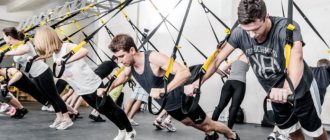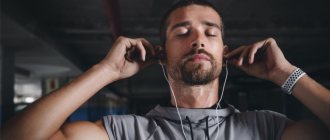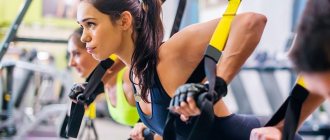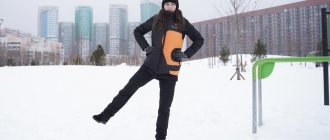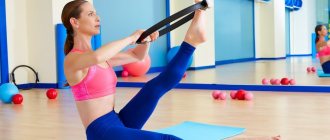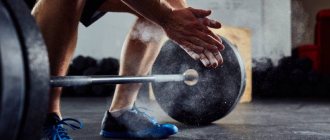On the pages of our website we have already talked about the effectiveness of the Pilates method for losing weight and improving body quality.
In this article, we offer you a unique selection of Pilates exercises for problem areas that will help you strengthen your muscles, tighten your stomach, and improve the shape of your buttocks and legs.
Pilates: features
Pilates exercises are especially worth paying attention to for those who cannot engage in shock loads due to problems with joints and blood vessels. Also, regular Pilates classes help get rid of back problems, straighten the spine, improve posture and strengthen the muscle corset.
Benefits of Pilates:
- Strengthening muscles and skeletal system
- Improving body quality
- Relief from back and lower back pain
- Relief from joint pain
- Prevention of musculoskeletal injuries
- Formation of beautiful posture
- Improving joint flexibility and mobility
- Improved coordination
- Relief from anxiety, insomnia and depression
- Development of concentration
- Anyone can do Pilates
We offer you 60 Pilates exercises for problem areas, which will mainly help you work on the muscles of the abdomen, back, thighs and buttocks. All exercises are divided into two large groups: for beginners and for more advanced ones. This selection includes the main basic Pilates exercises, as well as the most popular and effective modifications. This complex will help you effectively and efficiently work on all muscle groups.
For both beginners and advanced, we have divided Pilates exercises into three groups:
- Exercises for the abdomen, back and muscle corset
- Exercises for hips and buttocks
- Upper body exercises
As you understand, the division is very conditional. For example, many abdominal and back exercises also work the muscles of the legs and buttocks. Or in almost all exercises for the upper body, not only the muscles of the arms and shoulders are involved, but also the stomach, buttocks and legs.
Since there are a lot of exercises, and it is not possible to remember them after just one reading, we recommend that you bookmark this article (to bookmark, use the keyboard shortcut CTRL+D) to return to the selection of Pilates exercises at the right time.
Features of performing Pilates exercises:
- When performing Pilates exercises, we try to straighten our back, straighten our shoulders and pull them back. We keep the body taut and collected, it should not be relaxed.
- In the plank position, we do not bend, do not lower or lift the pelvis up. The body should form one straight line.
- When performing Pilates exercises on the back, the lower back should not come off the floor and bend; we try to press it to the floor. We pull the stomach towards the spine, without relaxing it.
- During classes, we do not help ourselves with our neck, we only work with our core muscles. The back of the head stretches back and up.
- In Pilates, exercises are performed for quality, not quantity and speed. Repeat each exercise no more than 15-20 times, but do it slowly and thoughtfully.
- When doing Pilates you should be focused on the muscles and how they work. To begin with, do not do Pilates for more than 20 minutes so that your attention does not wander, as happens during a long workout.
- It is not recommended to do Pilates during exacerbations of diseases of the musculoskeletal system.
Pilates accents on different areas of the body
One of the biggest benefits of Pilates is the fight against crooked posture. As you already understand, the peculiarity of the technique is to “stretch” the spine. By strengthening your back muscles, you can easily work out your abs. Therefore, I suggest you familiarize yourself in more detail with exercises for the upper shoulder girdle with Reemala Pilates & Garuda studio.
Having strengthened your back, move on to working your abs. Read about how to achieve a thin waist and get rid of excess weight in the material Pilates exercises for a flat stomach and abs.
Home Pilates workouts also work your buttocks. Here is an effective ten-minute complex. By performing the exercises technically correctly, you will achieve results in the near future:
Shoulder bridge with pelvic lifts and pulses
- Take a comfortable position, lying on the floor, feet shoulder-width apart with knees bent. Feel the stretch in your spine, tighten your abdominal muscles.
- We inhale and, as we exhale, twist our pelvis, activating our abdominal muscles, and push ourselves up into the shoulder bridge with the back of our legs. In the upper position, we stretch our tailbone towards the knees, maintaining the extension of the spine.
- We inhale and exhale, lengthening the thoracic region vertebra by vertebra, and slowly lower down. During the exercise, try not to spread your knees
- We perform 5-10 repetitions, then 10 more times, squeezing the buttocks in the upper position.
- Then, in the upper position, we perform 10-20 upward pulses, slightly squeezing the buttocks.
- We inhale and exhale as we lower ourselves down.
Leg raise with hip flexion and pulses
- We lie on our side, the arm is bent at the elbow and placed behind the head, the supporting leg is bent at the knee, the other is straight.
- Use your upper hand to help yourself balance in front of your chest. With the upper thigh we stretch from the upper shoulder, lengthening the upper side, until a small space is formed between the mat and the lower side. We tighten the abdominal muscles.
- Raise your upper leg parallel to the floor. We feel the stretch from the hip joint through the knee and ankle forward and completely relax the foot.
- As you inhale, lower your leg, lightly touching your foot, and exhale, lift your leg up. We perform 10-15 repetitions.
- From the top position we move the leg forward to a level where the sacrum does not yet begin to twist forward following the movement of the leg.
- As you inhale, raise your leg with a relaxed foot up, as you exhale, lower it down and move it back. Exhale forward and up, inhale down and back.
- Repeat 10-15 times.
- With your leg extended forward, perform 10-20 pulses.
- We repeat all exercises with the other leg.
Contraindications
Although Pilates is considered one of the safest forms of physical activity, beginners should exercise some caution, especially if they have chronic illnesses or injuries. You should not start classes if you are sick with seasonal viral diseases, let your body recover.
Within 2-3 months after an injury or surgery, even a small load is contraindicated, so exercise will have to be postponed until complete recovery.
Pilates for beginners is a great way not only to work out all muscle groups, but also to restore internal balance. Do not rush to complicate your exercises; it is important to thoroughly work out the technique of each exercise. Learn Pilates for beginners at home, train regularly, and within 2-3 months you will be able to move to the next level of difficulty, which will be another step towards physical and spiritual improvement!
Pilates Workout Plan for Beginners
Just starting out with Pilates? Then we offer you a ready-made lesson plan with a basic set of simple Pilates exercises. If an exercise doesn't work for you or causes discomfort, skip it or modify it to an easier version.
- Hundred: 30 times
- Twisting: 15 times
- Leg lowering: 15 times on each leg
- Single leg extension: 10 times on each leg
- Back raise with arms raised: 10 times
- Swimming: 10 times on each side
- Raising arms and legs on all fours: 10 times on each side
- Glute bridge: 15 times
- Leg raises on all fours: 15 times on each leg
- Diamond leg raises: 15 reps on each leg
- Side leg raises: 10 reps on each leg
- Leg raises for inner thighs: 10 times each leg
- Plank: 30 seconds
- Mermaid: 10 times on each side
- Reverse plank: 10 times on each leg
On average, this workout will take you about 20 minutes. The exercises can be interchanged, but this variation represents the most traditional arrangement of exercises in Pilates.
We definitely recommend reading:
- Top 25 exercises for buttocks and legs without squats, lunges and jumps
- Top 50 exercises for abdominal muscles: lose weight and tone your abs
- Top 20 exercises to improve posture and straighten your back
Recommendations
If you follow these tips, your workouts will become even more effective:
- Never start a class without warming up.
- Remember that the main thing is not the quantity of exercises and repetitions, but the quality. Try to master the technique and improve it.
- It is best to practice on a mat, as some exercises may cause discomfort when performed on the floor.
- It is more convenient to exercise without shoes and socks.
- To work the whole body, it is enough to choose 4-5 exercises for a beginner and up to 8 for an experienced athlete.
- If you want to lose weight or, on the contrary, build muscle mass, then Pilates should be alternated with cardio or strength training.
When choosing Pilates, keep in mind that you should not expect quick results, however, you will significantly increase joint mobility, flexibility and correct your posture, so it would be a good idea to pay attention to this type of fitness, at least as an additional training option.
How effective is Pilates for the back?
The complexes have not only a preventive effect, but also a therapeutic one. Without spending a lot of time on classes, without wasting strength and energy, being in a calm, peaceful mood, everyone will receive a boost of energy and get rid of unnecessary pathological changes in the spine or back muscles. Those who systematically do this gymnastics rarely get sick, since the exercises have a beneficial effect on increasing a person’s immunity and raising the mood and tone of the body. In addition, adherents of Pilates have excellent posture and a toned figure.
How to strengthen your back muscles with a fitball
Bending, according to experts, is the most effective gymnastic element to work the back muscles. With the help of a fitball held in your hands (they need to be raised above your head and not lowered), you will increase the load. According to the rules of Pilates, bends left-right and back-and-forth are done with tense abs and at a slow pace, while exhaling - with inhalation you should return to the vertical position. This load, repeated 30-40 times, can complete the workout. Additionally, the back is worked out as follows:
- In a lying position, press the projectile to your chest. As you exhale, begin to slowly lift your body by zones - neck, shoulders, shoulder blades, thoracolumbar region. Breathing is even.
- When you take a sitting position, stretch your hands with the gymnastic apparatus to your toes.
- Exhaling, bend forward, rounding your back.
- As you inhale, straighten up. With a new exhalation, smoothly lie down in the reverse order - thoraco-lumbar area, shoulder blades, shoulders, neck. Repeat 15 times.
Complex for the neck and cervical osteochondrosis
Pilates is very useful for cervical osteochondrosis
The cervical region is responsible for normal nutrition of the brain and the vascular system of the head. Therefore, in case of cervical osteochondrosis, it is necessary to clean the blood channels, restore and stabilize the functioning of the inflamed areas, which will be facilitated by this type of gymnastics.
For the figure
Of course, the first significant plus is a polished figure. There is ease in movements, the body becomes more toned. This is due to the fact that the muscles are worked very well, thereby increasing their elasticity. The consequence is excellent external data.
Pilates is very useful for those who are used to slouching or have scoliosis or kyphosis. After just a few sessions, you will notice how your shoulders straighten, and by reducing your stoop, you have become a couple of centimeters taller.
But the main “target” of Pilates is the stomach and thighs. Many suffer from excess deposits that like to accumulate on the outer thigh line. The figure in this case looks more bulky and squat. But this type of exercise solves this problem: the muscles lengthen, which leads to slimness and increased height.
How to quickly forget about pain in the spine and neck
If you start doing Pilates. The pain may go away in a week. For more serious pathologies, such as radiculitis, osteochondrosis, hernia, a longer time will be required depending on:
- From human physiology.
- Stages of the disease.
- The presence of other diseases.
But if you don’t stop exercising, the effect will definitely be achieved and you will forget about back and neck pain forever.
But, as you know, it is better to prevent the disease. To do this, you should start doing Pilates right now. While you are not yet bothered by discomfort and pain in the spine and neck.
Selecting the best exercises
You can choose the best exercises with the help of a doctor or on your own, depending on:
- Which part of the spine is bothering you?
- How intense is the pain in the spine?
- What is the person's age.
- What chronic diseases does he have?
Guided by your physical well-being, you determine the nature of the exercises for certain muscle groups, the training of which will allow you to effectively cope with existing pathologies or discomfort in the spine and back.
Types of Pilates workouts
Important! When choosing exercises, it is important that those muscle groups are involved that will help get rid of pain and other uncomfortable conditions in the spine.
Exercises with a ball for the buttocks
Complete the Pilates exercise with a ball with 2-5 kg dumbbells. This increases the efficiency of the technology by 1.5 times. Stand against the wall, press the ball tightly with your back, step forward 70 cm. Rolling the projectile vertically, slowly lower the virtual chair, and pause at the bottom for a short pause. If you can easily do 15 x 3, increase the weight of the apparatus.
Modifications
Now work with a miniball or toningball weighing up to 1.5 kg.
- Spread your legs wide, pointing your toes forward.
- Hold a ball or a pair of implements in straight arms in front of you.
- Lower yourself with your buttocks pulled back, simulating sitting on a chair.
- At the bottom point, hold for 3 seconds and return to IP.
Without releasing the projectiles, take a sumo position and use this principle to pump up your buttocks and adductor muscles.
Pilates squats with a miniball overhead provide a powerful load on the lower part of the body. The main thing is to keep your back straight, maintain a natural arch in the lower back, and perform each movement under control. Now focus on the sensations and enjoy the physical activity. Video Hyperextension on a fitball
What is the difference between Pilates and yoga?
The spiritual component makes Pilates similar to yoga, in which the harmonization of mind and body comes first. Attention to breathing and its deep study also brings Pilates and yoga closer together. However, there are more differences between them than similarities. Yoga is based on static load in the form of asanas, while Pilates, on the contrary, involves constant movement and changing body position, which gives more opportunities to work on muscles.
Additionally, yoga focuses on stretching and flexibility, while Pilates works on strengthening the core muscles that a person needs in everyday life.
How to choose a fitball
You can buy this gymnastic equipment at any sporting goods store, the price ranges from 800-3000 rubles. For Pilates, smooth, large balls without horns, handles, or other additions are predominantly used, although models with spikes are popular among women who want to fight cellulite. Main selection criteria:
- Diameter - 55 cm is considered universal, but petite women (below 155 cm) need 45 cm, and for those taller than 170 cm, it is recommended to take a projectile with a diameter of 65 cm. If your height is more than 185 cm, choose a diameter of 75 cm.
- Elasticity - press on the inflated fitball: it should spring back.
- ABS system – protection against rupture.
- Durability – a good fitball can withstand up to 300 kg.
Push-ups for triceps and biceps
Kneel in front of the apparatus. Place your hands on the floor in line with your shoulders, and lift your legs into the elastic sphere. With a straight body and tense abs, perform a series of push-ups.
Push-ups for triceps and biceps: starting position
Push-ups for triceps and biceps
3 extension options
The back muscles are strengthened not only on a special machine in the gym, but also on a ball.
- Lie on your stomach, straighten up, bring your hands to your lower back and clasp them in a lock. Maintaining balance, lift your upper body.
- Remaining in this position, keep your arms straight in front of you, and pull up along with lifting your torso.
- Now move the projectile closer to the solar plexus and perform reverse extensions with your legs at a measured pace.
Who is Pilates recommended for the back?
For all other categories of citizens, this gymnastics is simply necessary. Especially indicated for patients suffering from:
- Osteochondrosis.
- Spinal hernias.
- After injuries to ligaments, spine, muscle tissue.
- With joint problems.
- Overweight.
- With varicose veins.
- Age categories.
- Leading a sedentary lifestyle.
- Women in the postpartum period.
- For everyone who cares about their health.
Pilates principles
People of any age, body type, and with various diseases can exercise. Pilates is an absolutely non-traumatic form of gymnastics; the exercises can be easily performed even by obese people. Eliminates additional stress on the spine or muscles. Does not require investment or purchase of expensive equipment. Enough mat for gymnastics.
For the body
A huge plus of Pilates is real, not ephemeral results that can only be talked about. We talk about specific benefits: the spine straightens and, as a result, lengthens. This helps ensure that all organs fall into place and return to normal functioning. Now you are not afraid of liver and kidney diseases, and the gastrointestinal tract will not be disturbed by flatulence or other discomfort.
The benefits for the cardiovascular system are also undeniable: it is not worth reminding that with age, the likelihood of heart attack and stroke increases (especially in men), and conditions such as tachycardia or angina pectoris become almost a daily companion. And, of course, lung capacity increases. What does this give? The volume of blood increases, it circulates more actively, the organs are better supplied with oxygen - you will not only feel more energetic, but also begin to think faster and solve everyday problems.
The most noticeable effect of Pilates is the condition of the joints. You gradually, and without injury, stretch your joints, thereby increasing their mobility. It is not surprising that many leading doctors recommend this sport for rehabilitation if the patient has suffered a serious injury.
